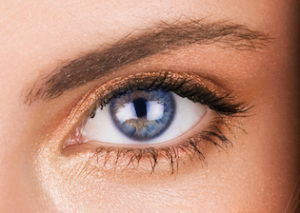 Upper eyelid surgery, also known as blepharoplasty, is a minimally invasive procedure that can dramatically improve the appearance of your eyes and restore your confidence. Oculoplastic surgeons, who specialize in eyelid surgery, use specialized techniques to remove excess skin, fat, and muscle from the upper eyelids, revitalizing the area and leaving you with a more youthful, refreshed look. In this guide, we’ll discuss what to expect before, during, and after upper eyelid surgery, and how to ensure you get the results you want without having to be put under general anesthesia. Khan Eyelid and Facial Aesthetics, led by oculoplastic and reconstructive surgeon Dr. Tanya Khan, provides eyelid surgery to patients in Plano, Dallas, Austin, Texas, and surrounding locations.
Upper eyelid surgery, also known as blepharoplasty, is a minimally invasive procedure that can dramatically improve the appearance of your eyes and restore your confidence. Oculoplastic surgeons, who specialize in eyelid surgery, use specialized techniques to remove excess skin, fat, and muscle from the upper eyelids, revitalizing the area and leaving you with a more youthful, refreshed look. In this guide, we’ll discuss what to expect before, during, and after upper eyelid surgery, and how to ensure you get the results you want without having to be put under general anesthesia. Khan Eyelid and Facial Aesthetics, led by oculoplastic and reconstructive surgeon Dr. Tanya Khan, provides eyelid surgery to patients in Plano, Dallas, Austin, Texas, and surrounding locations.
Understanding Upper Eyelid Surgery
Before diving into the details of upper eyelid surgery, it’s important to have a clear understanding of what this procedure entails. Upper eyelid surgery, also known as blepharoplasty, is a surgical procedure that focuses on rejuvenating the appearance of the upper eyelids. It is a common cosmetic surgery option for individuals who struggle with drooping or sagging upper eyelids.
During the procedure, the oculoplastic surgeon will carefully remove excess skin, fat, and muscle from the upper eyelids, creating a more refreshed and youthful appearance. The surgeon will also make incisions along the natural creases of the eyelids, ensuring minimal scarring. This procedure can significantly improve the overall aesthetics of your eyes and boost your self-confidence.
While upper eyelid surgery is primarily a cosmetic procedure, it can also have functional benefits. For individuals with severely sagging upper eyelids, the excess skin may impair their vision. By removing the excess skin, the surgery can help improve their visual field and overall eye function.
In the next section, we will explore the differences between local anesthesia and general anesthesia for upper eyelid surgery, allowing you to make an informed decision regarding your anesthesia preference.
Local Anesthesia vs. General Anesthesia
When it comes to upper eyelid surgery, one important decision you’ll need to make is whether to opt for local anesthesia or general anesthesia. Both options have their benefits and considerations, so let’s explore them further.
Local anesthesia is a popular choice for upper eyelid surgery because it allows you to remain awake during the procedure. With local anesthesia, the surgeon will numb the area around your eyes, ensuring you won’t feel any pain or discomfort. This can be a comforting option for those who may be nervous about being completely asleep during surgery.
On the other hand, general anesthesia involves being put to sleep for the duration of the procedure. This can be beneficial for individuals who prefer not to be aware of the surgery and want to feel completely relaxed. However, general anesthesia carries some risks and may not be suitable for everyone.
Ultimately, the decision between local anesthesia and general anesthesia will depend on your personal preference and the recommendation of your oculoplastic surgeon. It’s essential to have a thorough discussion with your surgeon to understand the pros and cons of each option and make an informed decision that ensures your safety and comfort.
Benefits of Local Anesthesia
Local anesthesia offers several benefits for upper eyelid surgery. Firstly, it allows you to remain awake during the procedure, which can be a comforting option for those who may feel anxious about being completely asleep. You can even have a conversation with your surgeon during the surgery, which can help alleviate any concerns or fears you may have.
Additionally, local anesthesia reduces the risk of complications associated with general anesthesia. Since you are not put to sleep, there is a lower risk of postoperative nausea and vomiting. You also don’t have to worry about the potential side effects or reactions that can occur with general anesthesia.
Another advantage of local anesthesia is that the recovery time is typically shorter compared to procedures performed under general anesthesia. Since you don’t have to recover from the effects of being put to sleep, you may be able to go home sooner and resume your normal activities more quickly.
Ultimately, the decision between local anesthesia and general anesthesia will depend on your personal preferences and the recommendation of your surgeon. However, the benefits of local anesthesia make it a popular choice for many individuals undergoing upper eyelid surgery.
The Procedure of Upper Eyelid Surgery with Local Anesthesia
During upper eyelid surgery with local anesthesia, the procedure begins with the administration of numbing medication to ensure you don’t feel any discomfort. Once the anesthesia takes effect, the surgeon will make precise incisions along the natural creases of your eyelids. This technique helps minimize scarring and ensures a more natural-looking result.
Next, the surgeon will carefully remove any excess skin, fat, and muscle from the upper eyelids, sculpting the area to create a rejuvenated appearance. Throughout the procedure, you will be awake and able to communicate with the surgeon, alleviating any anxiety or concerns you may have.
The entire procedure typically takes about one to two hours, depending on the complexity of your case. After the surgery is complete, the surgeon will apply sutures to close the incisions. You may experience some swelling and bruising in the days following the procedure, but these side effects should subside within a week or two.
Overall, upper eyelid surgery with local anesthesia offers a safe and effective way to revitalize your eyes without the need for general anesthesia. By choosing this option, you can achieve your desired results while remaining awake and comfortable throughout the process.
Contact Khan Eyelid and Facial Aesthetics and Oculoplastic & Reconstructive Surgeon Dr. Tanya Khan Today to Schedule an Appointment
For more information about procedures and treatments at Khan Eyelid and Facial Aesthetics by Ophthalmic surgeon Dr. Tanya Khan. Click here to contact us.
Taking patients from in and around Dallas, Plano, Fort Worth, Grapevine, Garland, Mesquite, Carrollton, Irving, Frisco, Texas and more.


 Choosing the right oculoplastic surgeon for
Choosing the right oculoplastic surgeon for 






Schedule a Consultation: 972-EYE-LIDS (393-5437)